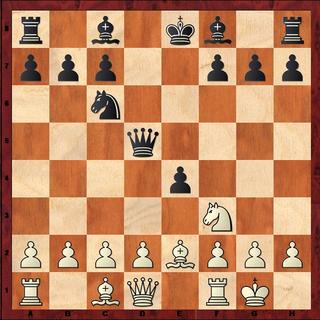White to Play
Published in Chess Puzzles

In this, our third installment looking into Dan Heisman’s new book, “Is Your Move Safe?” we’re going to look at a position I love. It comes in all shapes and sizes, but the mistakes in thinking made in this type of position are legion. It’s not a dazzling mating position. It’s a simple “here’s why I lose a lot of chess games” position. In the diagram, it’s White’s move. White has conceded the center to Black (no Nc3 to chase the Black queen), but it’s a defendable position with some clear thinking. The problem is that there is ample opportunity for some really superficial thinking, and Heisman reads the chess minds of countless amateurs in the choices he gives: a)8.c4 b)8.Nh4 c)8.Re1 d)8.Ne1. Which moves are safe?
- Solution: His answers are revealing. 8.c4 is nothing to write home about. Playable, but leaves a backward pawn on d2. 8.Nh4 is the “not paying attention to your opponent’s possible reply” move as it loses to 8…g5. I can’t tell you how many scholastic games I’ve gone over where players don’t look to see if their pieces have a way home if attacked. 8.Re1 is the “too clever by a half” move. White sees 8.Re1 exf3 9.Bxf3 winning the queen. “Yippee! I win the queen.” Of course that assumes Black cooperates…a huge and common assumption at novice levels. Heisman points out that the simple 8.Re1 Be7 wins the knight because Re1 took away the only retreat square! The safest move is the retreat 8.Ne1, which allows White to play 9.f3 or 9.d3 in order to attack the advanced pawn. So both a. and d. are safe, but the tempting b. and c. choice are not, yet novices seem strangely attracted to those kinds of moves. That’s why I enjoyed this book so much—excellent practical situations and tips. I’m going to order some for my students.
Send questions and comments to PTamburro@aol.com.






